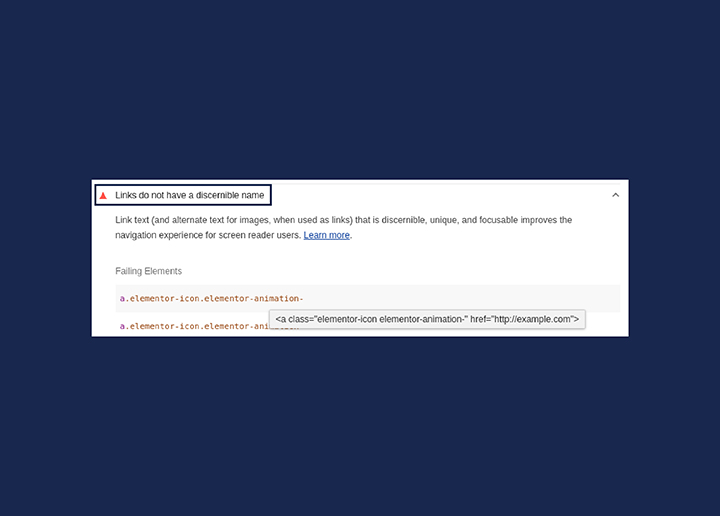An SEO (search engine optimization) audit is an analysis designed to understand the reasons for poor website positioning in search engines. In addition, the SEO audit helps identify opportunities for improvement in SEO optimization. In the battle for higher rankings in search results, this is a crucial step in an SEO strategy. This blog aims to enlighten you on the workings of an SEO audit to allow you to carry out such an analysis yourself.
Contents
ToggleWhat is an SEO audit?
An audit is a complete analysis of the visibility of a site on the web. The analysis allows you to understand why your site is not generating traffic and why your sales stagnate. This analysis reveals all its interest in e-commerce stores, online sales sites, agencies, and auto entrepreneurs. In short, for all professionals who want to be visible on the web and gain more traffic, it is essential to do an in-depth SEO audit.
Previously, it was enough to add links and keywords to a bit of tag and content visible on the internet. Today, search engines like Google use a particularly sophisticated algorithm to determine the order of appearance of pages within the SERP (Search Engine Results Page). Therefore, succeeding in hosting your website on the first page of results requires precise SEO techniques.
To determine this order of appearance, Google will analyze in particular:
- Site speed and responsiveness
- The quality of the content
- Site authority
- The technical code
It is therefore essential to take care of certain elements, such as:
- The number and quality level of backlinks
- The quality of the links on your website should be excellent. Indeed, broken links are detrimental to natural referencing.
- Site loading speed, with GTMetrix, for example.
- URL structure
- The Meta (Meta Description in particular)
- The SSL certificate of your site
- If your website is responsive
The advantages of SEO audit
A good SEO audit should provide the owner with a starting point for improving their web presence. It also makes it possible to relate all the facts that prevent the site’s excellent functioning and indicate the actions to enhance the site’s visibility.
The determining elements of a successful SEO audit
A thorough SEO audit includes at least the following:
An Onsite audit (technical): An onsite audit is essential to ensure that your site is well-coded and fast enough. It also includes a full review of all pages to see if the keywords are being used rightly; they are present in all relevant areas (H1-H6, title tags, content, etc.).
An Offsite audit (authority and legitimacy): Analysis of backlinks, anchor text, administration, and site trust rate.
A good SEO audit should provide a detailed analysis of every SEO-related element of the site. It is a complete report of 20 to 30 pages created in the rules of the art and with respect for confidentiality!
Techniques for performing an SEO audit
First and foremost, you need to create a viable audit strategy that will help in establishing your goals. Then start by doing a general check:
- Have an overview of the competition,
- Analyze your keywords,
- Improve the technical aspects of the site.
After starting these actions, you can contact an SEO expert to conduct the audit. In terms of SEO audit, you must always choose the technique that includes an audit:
- Onsite
- Offsite
- Competitive analysis and keyword research
Onsite Audit
This internal audit brings together two parameters: accessibility and indexability. If your potential visitors can’t see your pages, there’s no point in creating new content. Accessibility allows you to assess the level of difficulty in accessing your sites by Google and by users.
This step also includes parsing the robot.txt file. You need to check your robots.txt file and the metatags that help the web crawlers for site crawling and indexing. These two internal elements are essential because they restrict access of the crawler to certain areas of your site. Inadvertent, a webmaster makes access to certain pages impossible by Google.
Another crucial aspect of the site is the XML Sitemap which is a map for Google robots. A failure in its formatting can make the site inaccessible to the crawlers.
Internal analysis requires checking the overall architecture of the site and the status of redirects. A website with good architecture is easier to access for crawlers. The redirects must allow access to a moved or deleted page.
These elements are essential since they can negatively affect your positioning in search engines and harm your web referencing strategy.
After performing the first step correctly, you should now move on to indexability. If accessibility facilitates access to your pages, indexability makes it possible to appear on the search engine after being consulted by the Google bot. Note that the content is very engaging & appealing to the audience. Also, the choice of content should be selective, and it has no plagiarism issues.
Duplicate content is the main reason why some pages don’t show up in search results. Keep in mind that crawlers work differently if you are a large business or a small blogger. In the first case, Google will index your pages almost immediately. On the other, your content will get index more slowly. But, it would be best if you did not panic in any of the cases. In the event of a penalty, you will receive a message in your webmaster’s tool account.
The Contents
Two main content issues are keyword and duplicate content issues.
Why is Google penalizing duplicate content?
Quite simply because it causes indexing conflicts. In the event of plagiarism, Google will consider the duplicate content to be less trustworthy, which will penalize its ranking in search engines. In addition, plagiarized content reduces the user experience.
The importance of structuring individual pages
Individual page structures refer to how each page is structured. They take into account several things, such as the length of the text and the clarity of the URL.
So, your URL should be able to describe your content correctly and briefly. Your content should be at least 500 words, and your images should be optimized. Finally, your external links should be relevant and functional.
Offsite Audit
The Offsite audit is, in a way, the result of your work. It is a sign of your website’s popularity level and its trust score.
A high trust factor is a guarantee of relevance in the eyes of Google. The level of popularity is linked to the amount of consultation of your pages by Internet users and the general bounce rate. It considers the level of traffic to your site, your external links, your social mentions, and the length of time you visit your site. In a way, the Offsite analysis shows you how Internet users react to your site.
Competitive Analysis & Keyword Research
After analyzing all these questions, let’s move on to keyword analysis. In the world of SEO, keyword research and competitive analysis are almost identical. It is impossible to analyze the performance of a keyword without considering the potential competitors on that keyword.
Good SEO is based on your ability to position yourself on target keywords. In this regard, it would be better to focus on long-tail keywords. There are several tools at your disposal to identify the keywords that will bring you qualified traffic. It is better to focus on keywords whose position is between 5 and 20 to improve your SEO significantly. By using them wisely, you will be able to position yourself on the first page of SERPs.
Businesses can perform this analysis using other specific SEO tools. However, there are many paid & free tools; one of the top SEO tools is Ahrefs.
Final Thoughts
It is essential to perform a regular SEO audit of your website to succeed in your SEO strategy. Also, you need to check and test all of the technical parameters to spot the error and rectify them quickly.
Make sure that your website loads faster and the internal linking is executed well. Broken links can negatively impact your site’s SEO; therefore, it is essential to identify and remove unnecessary redirects and broken links.
A backlink audit can help you figure out your competitors’ backlinks, improve your SEO, and much more.
Once you complete the SEO audit, there are other parts of SEO which you should consider to ensure you stay competitive. After all, the technical foundation isn’t enough for the overall SEO success. You must pay attention to your competitor’s SEO activity, keep an eye on the search engine’s new trends and best practices, & local SEO best practices.
Do you want to get an SEO health check for your website? Head to Seahawk! Our SEO experts team can help you!


















